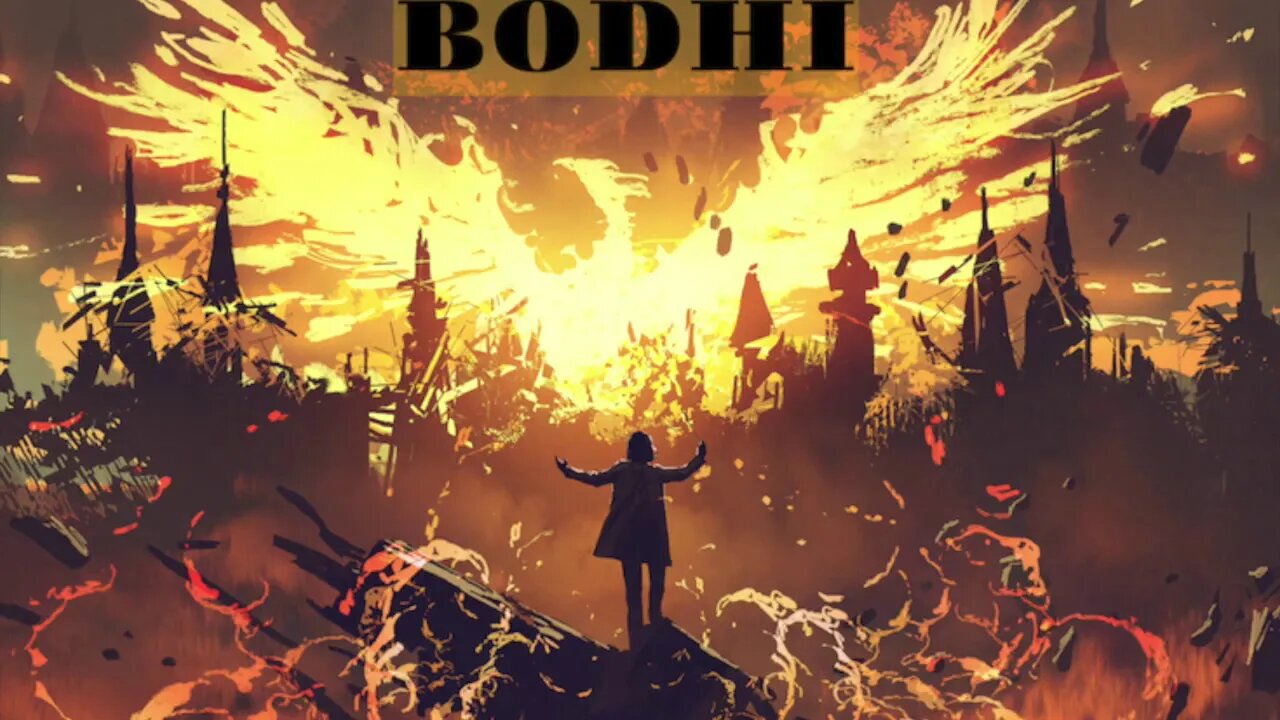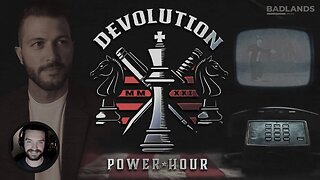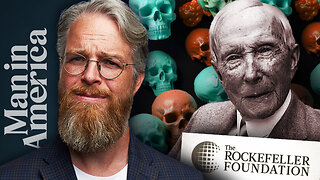Premium Only Content

Rise of the Phoenix.
The theme song to the channel in full.
Part 8 - Rise of the Phoenix.
This track is the final track of a concept album divided into eight parts or chapters. An esoteric theme of integration, individuation and the Re- Membering of the self. The Fool, once an all knowing, ineffable being wanting to know the unknowable, divides and polarises himself, resulting in the loss of wisdom and takes an epic journey into a self imposed prison of mind. The collective consciousness is Re- Membering, We are All One.
Vocals and songwriting - Mike Alathea
Guitar - Steve Barnard
Guitar- Dan Williams
Bass -Jonathon Liversedge
Drums - Oskars Petersons
Full album: https://www.youtube.com/watch?v=rTQZEa8eWL4&t=75s
Spotify: https://open.spotify.com/album/09oCSFdVEbecU9Qm15WEql?si=YgdGqzHYTAKG7G40xmK0gQ
Summary:
The plot is based around a common tale which is often retold through myth, religion and esoteric traditions. The main idea being that everything or God or ‘Godhead’ (Kornblatt, J. 1991. p212) are one being. However through reflection and a desire to know the self , everything has divided itself up, consequently creating a world of illusions and dreams (Samsara as it is known in Vedic traditions). Carl Jung explored this idea in his work and tied it closely with themes of alchemy, referring to the process as the ‘hierosgamos’ (Jung, C. 2010. p37). Jung also identified parts of the self as archetypes, which needed to be integrated for self realisation. In Vedic tradition it is implied that this journey or cycle, is one of self remembering, everything has forgotten that it is the almighty. In the Tarot system we see a similar story being told, whereby different archetypes are explored in the form of twenty two cards. The fool being one of those archetypes who ‘innocently yet somehow quite knowingly embarks upon the quest for self knowledge’ (Nichols, S. 1980). The main character of this tale is the fool. In Gnosticism a variety of deities also represent these archetypal parts of mind.
References for work:
Crowley, A. (1980). Book four. York beach. Red Wheel Weiser LLC.
Crowley, A. (1944). The Book of Thoth. Red Wheel Weiser LLC.
Fulcanelli. (2007). Le Mystere des Cathedrales. London. C. W. Daniel publishing.
Jung, C. (1953.) Psychology and alchemy. Oxfordshire: Rutledge.
Jung, C. (1968). Archetypes of the collective unconscious. Collected works of C. G. Jung, Vol. 9. Part 1. 2nd ed. Princeton University Press.
Hall, M. (1928). Secret Teachings of All Ages. San Francisco: H.S. Crocker, Print.
Koeing, P. (1996). The laughing Gnostic and the occult. Available at http://www.parareligion.ch/bowie.htm.
Kornblatt, J. (1991) Solov'ev's Androgynous Sophia and the Jewish Kabbalah. Slavic Review 50, no. 3: 487-96. doi:10.2307/2499846.
Nichols, S. (1980.) Jung and Tarot: an archetypal journey. Red Wheel Weiser LLC.
Parrott, D . (1987). Gnosticism and Egyptian Religion. Novum Testamentum 29, no. 1: 73-93. doi:10.2307/1560811
Savage, S. (2010). David Bowie: ‘Outside’, Aleister Crowley and the Holy Grail. Available at http://www.parareligion.ch/2010/bowie....#riseofthephoenix #bodhimusic #jung
-
 LIVE
LIVE
FreshandFit
3 hours ago10 Top Red Pills About American Women
3,949 watching -
 LIVE
LIVE
Badlands Media
8 hours agoDevolution Power Hour Ep. 383
10,142 watching -
 LIVE
LIVE
Inverted World Live
2 hours agoAnnunciation Catholic School Shooting and Spiritual Warfare w/ AK Kamara | Ep. 99
4,316 watching -
 LIVE
LIVE
TimcastIRL
2 hours agoTrans Shooter Targets Catholic Kids In Mass Shooting, Leftists Reject Prayers | Timcast IRL
7,114 watching -
 LIVE
LIVE
SpartakusLIVE
4 hours ago#1 Birthday Boy Celebrates with MASSIVE and HUGE 4.8-Hour Stream
376 watching -
 LIVE
LIVE
Man in America
6 hours agoFrom Oil Barons to Pill Pushers: The Rockefeller War on Health w/ Jeff Adam
640 watching -

Barry Cunningham
3 hours agoBREAKING NEWS: PRESIDENT TRUMP THIS INSANITY MUST END NOW!
53.7K74 -
 LIVE
LIVE
StevieTLIVE
2 hours agoWednesday Warzone Solo HYPE #1 Mullet on Rumble
135 watching -
 5:58
5:58
Mrgunsngear
3 hours ago $0.38 earnedBreaking: The New Republican Party Chairman Is Anti 2nd Amendment
4.46K3 -
 LIVE
LIVE
Geeks + Gamers
3 hours agoGeeks+Gamers Play- MARIO KART WORLD
247 watching